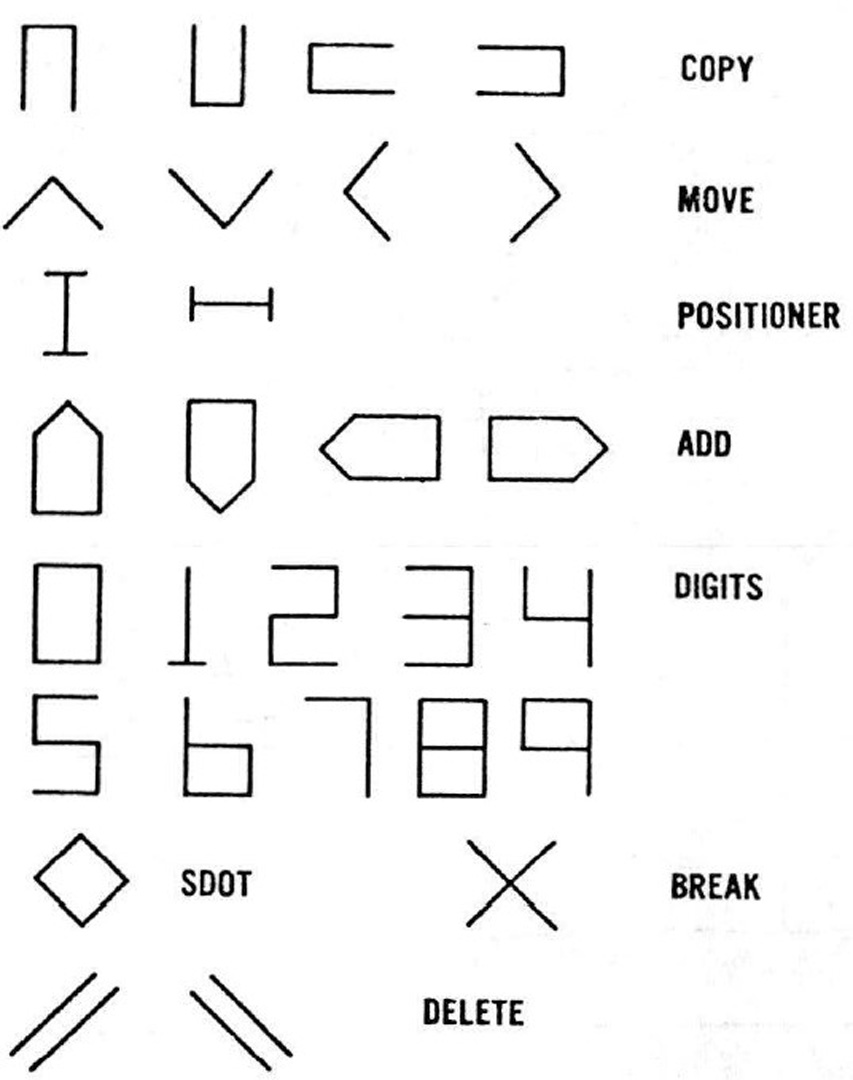“The line drawing editor, an experiment in computer vision” by Jarvis
Conference:
Type(s):
Title:
- The line drawing editor, an experiment in computer vision
Presenter(s)/Author(s):
Abstract:
A computer program, the Line Drawing Editor (LDE), that allows convenient modification of computer representations of simple line drawings has been designed and implemented. The distinguishing feature of the LDE from the multitude of interactive graphics programs that accomplish the same function is the use of a computer controlled TV camera for input and program control rather than conventional interactive input devices such as light pens or data tablets. A graphical editing language allows the LDE user to indicate, by marking the drawing in appropriate fashion, the changes that are to be made. The drawing, which was generated on a hardcopy output device, with the added edit information is placed in front of the camera. In successive phases the LDE computes a two dimensional homogeneous transformation relating the viewed drawing and its computer description, locates the lines added to the drawing, parses the added lines according to the edit language and finally uses this information to update the drawing description.
References:
1. I. E. Sutherland, “SKETCHPAD: A Man-Machine Graphical CommunicationSystem,” MIT Lincoln Lab TR 296, May 1965. Also in Proceedings of the 1963 SJCC pp. 329-346.]]Google Scholar
2. M. D. Mancusl, J. C. Wild, “Interactive Graphics for Schematic Editing, a Working Tool,” Proc. Ninth ACM/IEEE Design Automation Workshop (1972), pp. 301-304.]] Google ScholarDigital Library
3. D. M. Ritchie, K. Thompson, “The UNIX Operating System,” CACM 17 (July 1974) pp. 365-375.]] Google ScholarDigital Library
4. J. F. Jarvis, “A Graphical Display System Utilizing Plasma Panels,” Computers and Graphics 1, (1975) pp. 175-180.]]Google ScholarCross Ref
5. EMR Photoelectric Inc. Box 44 Princeton N. J. 08540]]Google Scholar
6. J. F. Jarvis, “An Area Organized Data Base for Interactive Graphics,” Computer Graphics 9, (1975) pp. 184-190 . (Proceedings of the Second Annual Conf. on Computer Graphics and Interactive Graphics)]] Google ScholarDigital Library
7. P. A. Ota, “Mosaic Grammars” Pattern Recognition 7 (1975) pp. 61-65.]]Google ScholarCross Ref
8. A. V. Aho, J. D. Ullman, “The Theory of Parsing, Translation and Compling” Prentice-Hall 1972.]] Google ScholarDigital Library
9. J. C. Wild, “The Early Stages of Machine Perception: An Application to Reading Machines” Ph.D. Thesis, Rutgers University, 1976.]] Google ScholarDigital Library
10. J. R. Fram, E. S. Deutsch, “On the Quantitative Evaluation of Edge Detection Schemes and Their Comparison with Human Performance” IEEE Trans. Comp. C24(1975) pp. 616-628.]]Google ScholarDigital Library
11. R. O. Duda, P. E. Hart, “Using the Hough Transform to Detect Lines and Curves in Pictures” CACM 15 (1972), pp. 11-15.]] Google ScholarDigital Library
12. S. D. Shapiro, “Transformations for the Computer Detection of Curves in Noisy Pictures,” Computer Graphics Image Processing 4 (1975) pp. 328-338.]]Google ScholarCross Ref




